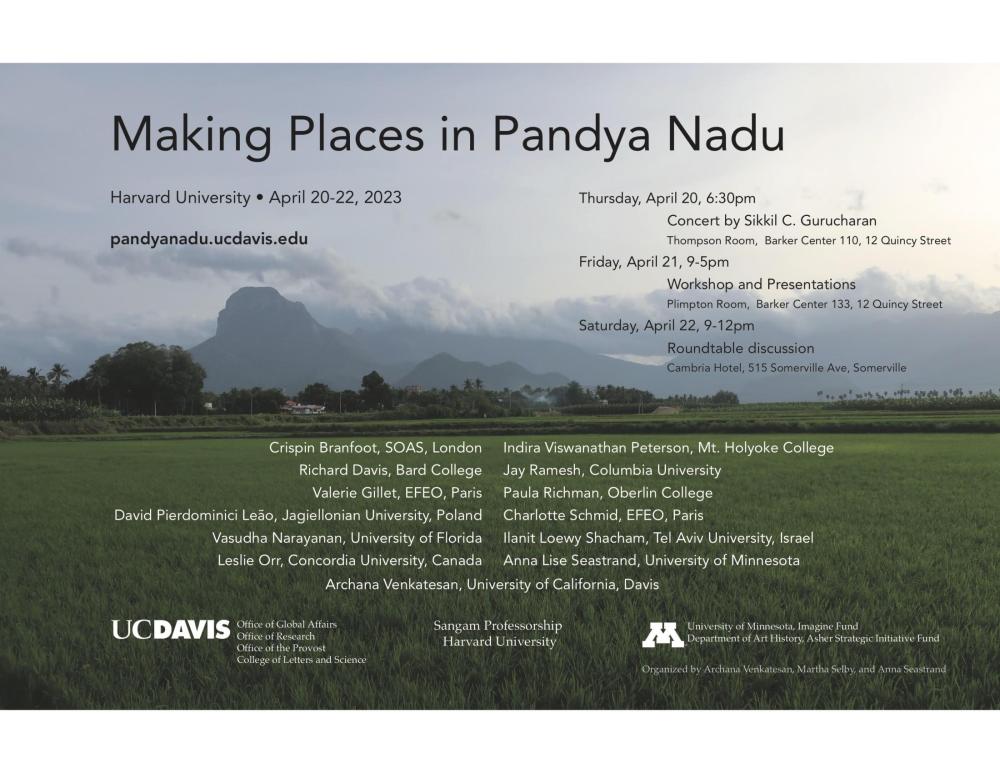
This workshop focuses on the medieval and early modern period in the regions south of Madurai, referred to as Pandya Nadu. Although the region derives its name from the Pandya dynasty, this workshop is less concerned with establishing a singular Pandya identity or arguing for a hegemonic, top-down imperial Pandya administrative and donative State. Rather, we take Pandya Nadu as a geographic descriptor of the Tamil deep south, anchored by two great rivers—the Vaigai and the Tamiraparani—consisting of several ever-shifting nodes of cultural, political, and religious significance and characterized by distinctive regional and local networks.
We are concerned with exploring and investigating the formation, development, and character of these networks and these nodes between the medieval to the early modern period (ca. 6-17th centuries), within the context of the complex political, cultural, and religious formations and developments during this nearly millennium-length period. Thus, for instance, speakers will engage with the imagining of sacred sites across the Pandya land by the poet, Nammāḻvār, who signed his poems with the Pandyan-title, Māṟaṉ, with the small donors, small kingdoms and chieftains who sponsored and built temples, the rise of Islamic settlements and traders in the region, the linking of Pandyan sites like Srivilliputtur and Tirukkurungudi in Telugu literary works, like the Āmuktamālyada, the expansion of temples into sprawling campuses of sacrality, or the ornamentation of the interior of gopurams in this region, a distinguishing decorative feature of many of the grand temples of this region.
Despite the richness of Pandya country, there is little scholarship on it, certainly compared to the volumes produced on the Colas, who were dominant in the Kaveri region. Cola-scholars have examined and debated the form of the Cola’s administrative state, have studied their bronzes and great temples, and have entered deeply into the Colas’ literary worlds. This workshop aims to begin a conversation about the Pandya country, both to understand the continuities and the departures between these two regions, while also paying attention to the political complexities of the several dynasties operating in the Tamil deep south, who claimed a Pandya identity. Further, Pandya Nadu’s proximity to land across from the Western ghats (Chera-land/present-day Kerala), offers yet another important, but little investigated, line of enquiry. This workshop draws attention not only to an understudied region of the Tamil country, but a little examined time span as well, which has largely been approached in disconnected ways: “the far-south bhakti poets,” “Madurai Nayakas,” and “imperial Pandyas.” Nilakantha Sastri’s 1929 The Pandyan Kingdom still remains the only book dedicated to the subject.